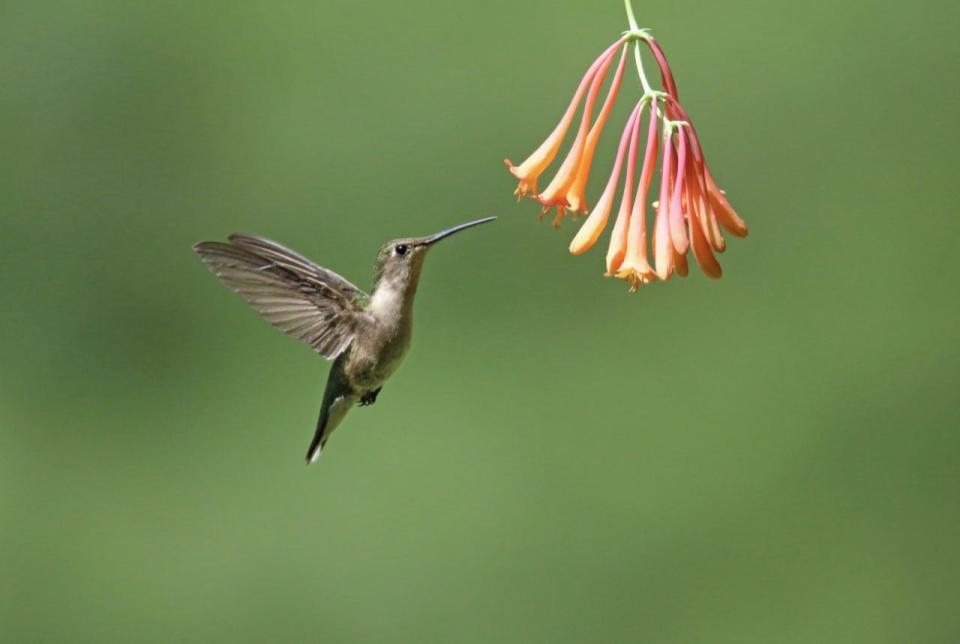Get ready to put your hummingbird feeders out. See where they are with interactive map
Hummingbirds are synonymous with spring, and for many Rhode Island gardeners and bird watchers used to temperamental New England weather, looking out the window to see these hard-working pollinators hovering over the flowerbed is as sure a sign as any that the seasons have finally turned.
The only species of hummingbird that breeds in Rhode Island is the ruby-throated hummingbird, according to Charles Clarkson, director of Audubon Avian Research. Weighing less than a nickel, these tiny birds migrate from the United States to Mexico, Costa Rica and Panama for the winter.
Then they have to come back, typically arriving back in Rhode Island in late April.
When will hummingbirds return to Rhode Island?

Thanks to HummingbirdCentral.com, an interactive map allows bird watchers to report sightings that will then be fed into the constantly updated map, hummingbirds are easy to track. As of Monday, April 15, the birds have not yet been reported in Rhode Island, with early arrival having been seen in Ford, New Jersey this past weekend.
This is somewhat later than last year, with the first hummingbird sighting in the state reported on April 13, 2023, in Westerly.
Hummingbird rest stop
If you want to set up a feeder for the hummingbirds after their continent spanning journey, Charles Clarkson, director of Audubon Avian Research, in an email, recommended the following:
A mixture that is one part sugar to four parts water. A tip: “Bleached white sugar works just fine, and many individual birds seem to prefer it,” he wrote.
Change the feeder every week.
When you change the food, clean the feeder with a solution that is 10% bleach and 90% water. Rinse well.
Hang the feeder in an open area. “Hummingbirds dart around and maneuver constantly and need the space to accommodate these movements,” he wrote.
Bird watchers should be careful where and when to set up their feeders however - the food inside can attract much larger wildlife such as bears. Residents in areas with heavy bear activity are advised to use their discretion.
This article originally appeared on Telegram & Gazette: Ruby-throated hummingbird Interactive Map: See how close they are to RI

